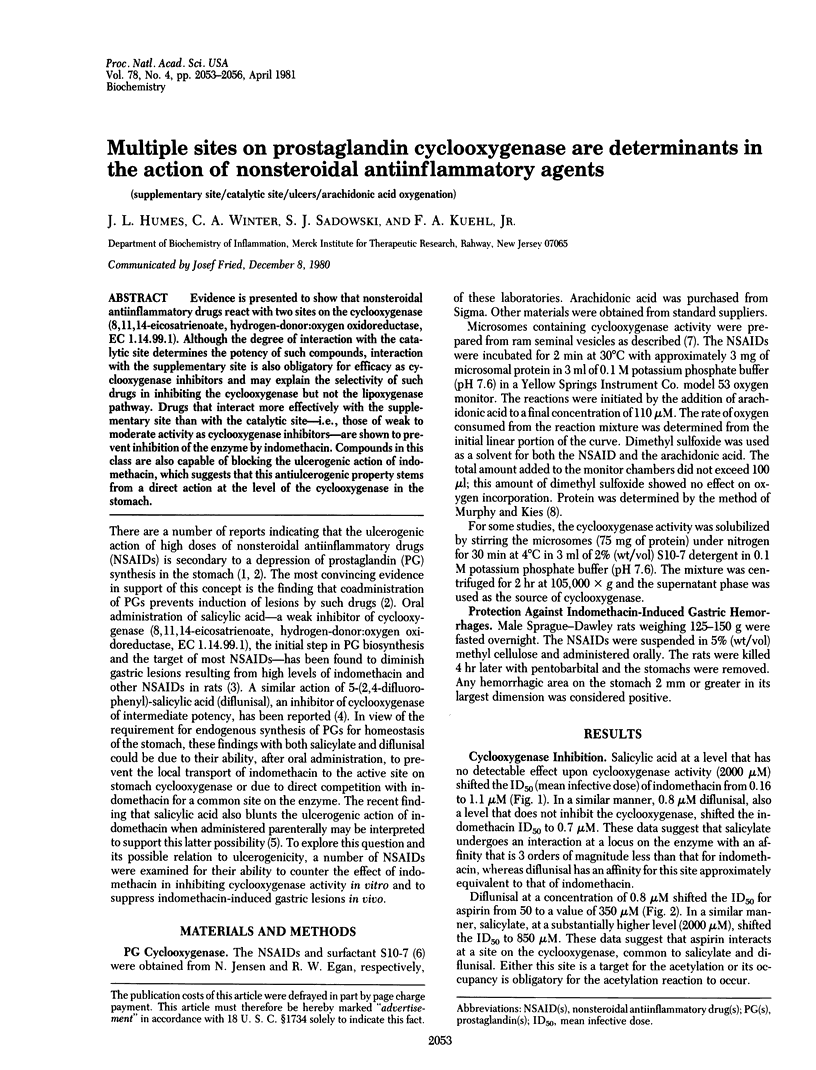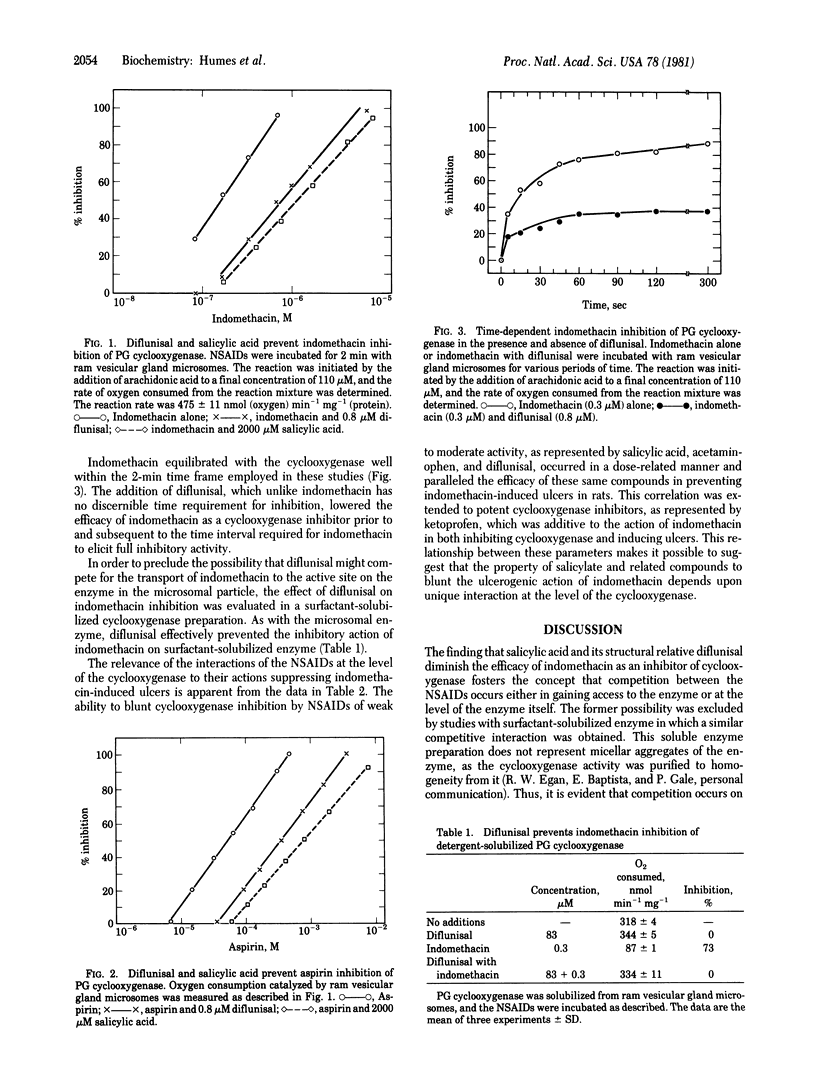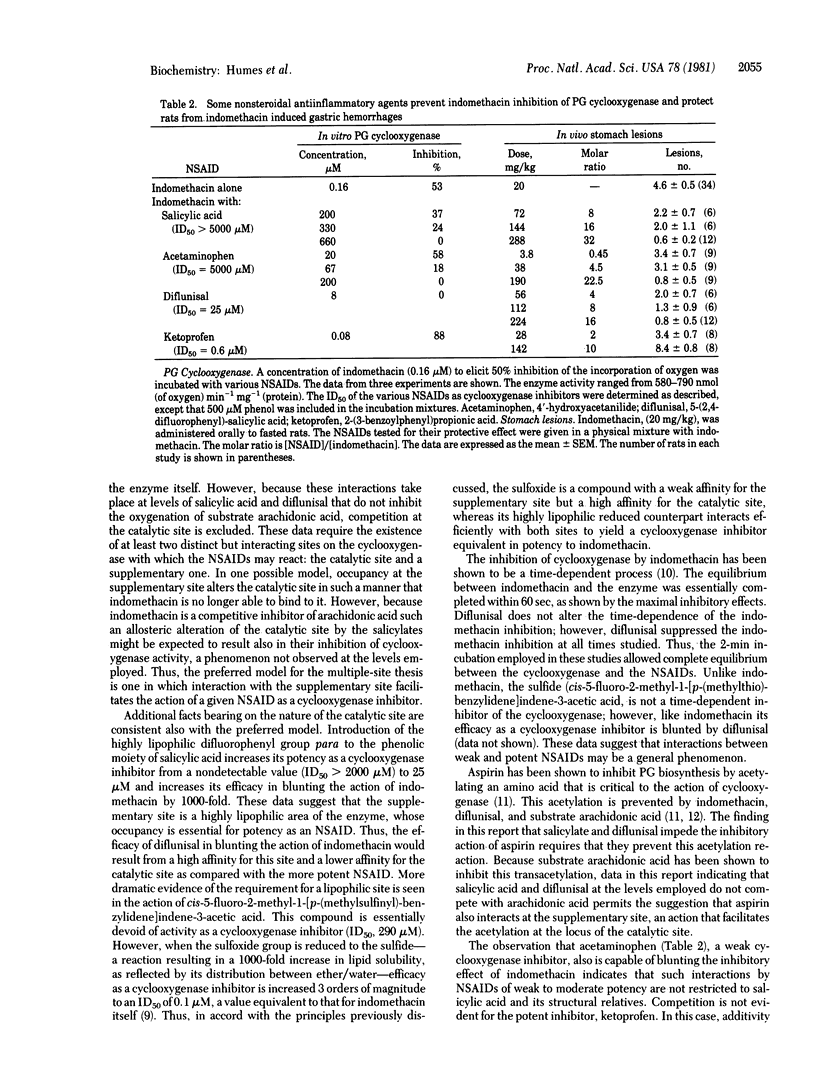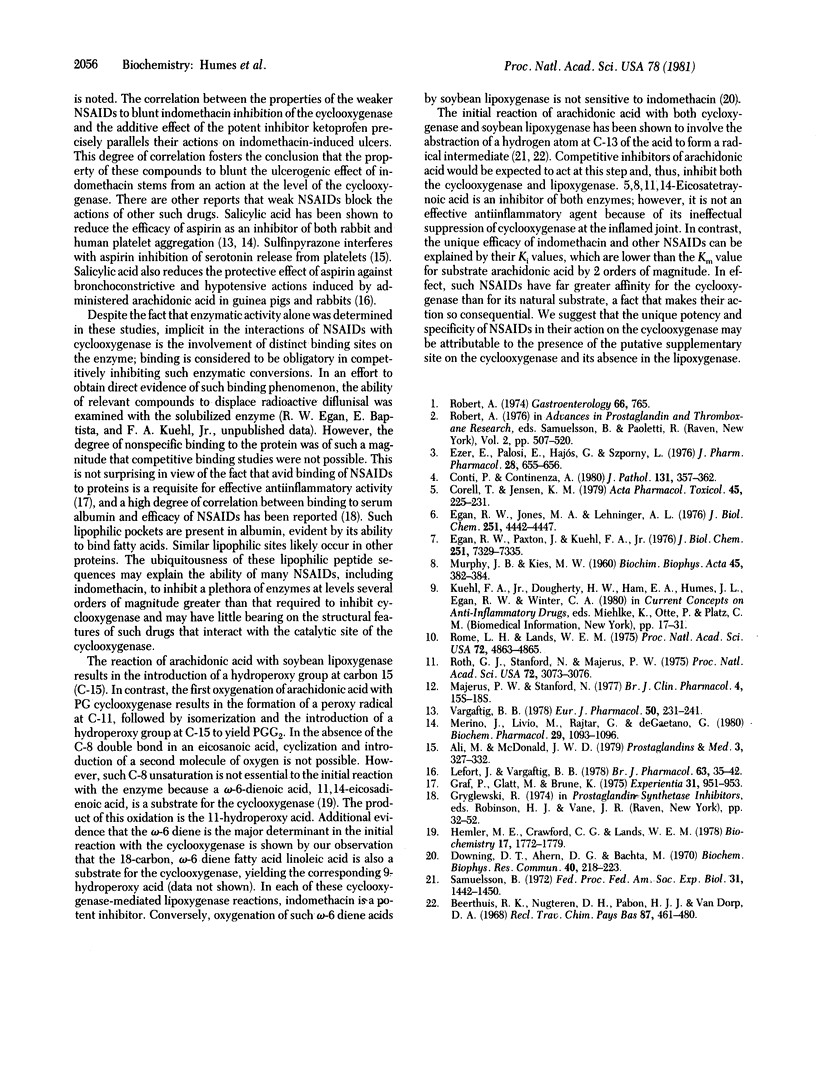Abstract
Evidence is presented to show that nonsteroidal antiinflammatory drugs react with two sites on the cyclooxygenase (8,11,14-eicosatrienoate, hydrogen-donor:oxygen oxidoreductase, EC 1.14.99.1). Although the degree of interaction with the catalytic site determines the potency of such compounds, interaction with the supplementary site is also obligatory for efficacy as cyclooxygenase inhibitors and may explain the selectivity of such drugs in inhibiting the cyclooxygenase but not the lipoxygenase pathway. Drugs that interact more effectively with the supplementary site than with the catalytic site--i.e., those of weak to moderate activity as cyclooxygenase inhibitors--are shown to prevent inhibition of the enzyme by indomethacin. Compounds in this class are also capable of blocking the ulcerogenic action of indomethacin, which suggests that this antiulcerogenic property stems from a direct action at the level of the cyclooxygenase in the stomach.
Full text
PDF



Selected References
These references are in PubMed. This may not be the complete list of references from this article.
- Ali M., McDonald J. W. Interference by sulfinpyrazone and salicylate of aspirin inhibition of platelet cyclooxygenase activity. Prostaglandins Med. 1979 Dec;3(6):327–332. doi: 10.1016/0161-4630(79)90025-9. [DOI] [PubMed] [Google Scholar]
- Conti P., Continenza A. Decreased ulcerogenic effect of indomethacin in the rat when given in association with diflunisal. J Pathol. 1980 Aug;131(4):357–361. doi: 10.1002/path.1711310407. [DOI] [PubMed] [Google Scholar]
- Corell T., Jensen K. M. Interaction of salicylates and other non-steroidal anti-inflammatory agents in rats as shown by gastro-ulcerogenic and anti-inflammatory activities, and plasma concentrations. Acta Pharmacol Toxicol (Copenh) 1979 Sep;45(3):225–231. doi: 10.1111/j.1600-0773.1979.tb02386.x. [DOI] [PubMed] [Google Scholar]
- Downing D. T., Ahern D. G., Bachta M. Enzyme inhibition by acetylenic compounds. Biochem Biophys Res Commun. 1970 Jul 13;40(1):218–223. doi: 10.1016/0006-291x(70)91069-7. [DOI] [PubMed] [Google Scholar]
- Egan R. W. Hydrophile-lipophile balance and critical micelle concentration as key factors influencing surfactant disruption of mitochondrial membranes. J Biol Chem. 1976 Jul 25;251(14):4442–4447. [PubMed] [Google Scholar]
- Egan R. W., Paxton J., Kuehl F. A., Jr Mechanism for irreversible self-deactivation of prostaglandin synthetase. J Biol Chem. 1976 Dec 10;251(23):7329–7335. [PubMed] [Google Scholar]
- Ezer E., Palosi E., Hajós G., Szporny L. Antagonism of the gastrointestinal ulcerogenic effect of some nonsteroidal anti-inflammatory agents by sodium salicylate. J Pharm Pharmacol. 1976 Aug;28(8):655–656. doi: 10.1111/j.2042-7158.1976.tb02824.x. [DOI] [PubMed] [Google Scholar]
- Graf P., Glatt M., Brune K. Acidic nonsteroid anti-inflammatory drugs accumulating in inflamed tissue. Experientia. 1975 Aug 15;31(8):951–953. doi: 10.1007/BF02358871. [DOI] [PubMed] [Google Scholar]
- Hemler M. E., Crawford C. G., Lands W. E. Lipoxygenation activity of purified prostaglandin-forming cyclooxygenase. Biochemistry. 1978 May 2;17(9):1772–1779. doi: 10.1021/bi00602a031. [DOI] [PubMed] [Google Scholar]
- Lefort J., Vargaftig B. B. Role of platelets in aspirin-sensitive bronchoconstriction in the guinea-pig; interactions with salicylic acid. Br J Pharmacol. 1978 May;63(1):35–42. doi: 10.1111/j.1476-5381.1978.tb07771.x. [DOI] [PMC free article] [PubMed] [Google Scholar]
- Majerus P. W., Stanford N. Comparative effects of aspirin and diflunisal on prostaglandin synthetase from human platelets and sheep seminal vesicles. Br J Clin Pharmacol. 1977 Feb;4 (Suppl 1):15S–18S. doi: 10.1111/j.1365-2125.1977.tb04509.x. [DOI] [PMC free article] [PubMed] [Google Scholar]
- Merino J., Livio M., Rajtar G., de Gaetano G. Salicylate reverses in vitro aspirin inhibition of rat platelet and vascular prostaglandin generation. Biochem Pharmacol. 1980 Apr 15;29(8):1093–1096. doi: 10.1016/0006-2952(80)90401-3. [DOI] [PubMed] [Google Scholar]
- Rome L. H., Lands W. E. Structural requirements for time-dependent inhibition of prostaglandin biosynthesis by anti-inflammatory drugs. Proc Natl Acad Sci U S A. 1975 Dec;72(12):4863–4865. doi: 10.1073/pnas.72.12.4863. [DOI] [PMC free article] [PubMed] [Google Scholar]
- Roth G. J., Stanford N., Majerus P. W. Acetylation of prostaglandin synthase by aspirin. Proc Natl Acad Sci U S A. 1975 Aug;72(8):3073–3076. doi: 10.1073/pnas.72.8.3073. [DOI] [PMC free article] [PubMed] [Google Scholar]
- Samuelsson B. Biosynthesis of prostaglandins. Fed Proc. 1972 Sep-Oct;31(5):1442–1450. [PubMed] [Google Scholar]
- Vargaftig B. B. The inhibition of cyclo-oxygenase of rabbit platelets by aspirin is prevented by salicylic acid and by phenanthrolines. Eur J Pharmacol. 1978 Aug 1;50(3):231–241. doi: 10.1016/0014-2999(78)90355-2. [DOI] [PubMed] [Google Scholar]


